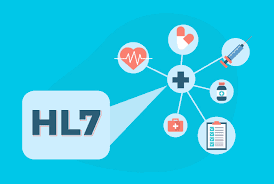Navigating the complex and ever-evolving world of HL7 can feel like embarking on a journey through uncharted territory. As healthcare technology continues to advance at a rapid pace, the need for seamless data exchange and interoperability has never been more crucial. Whether you’re a seasoned IT professional or a healthcare provider looking to enhance your understanding of HL7, this ultimate guide is your compass in deciphering the intricacies of this vital standard. Join in our HKR Trainings to gain more knowledge on HL7!
What is HL7?
HL7, or Health Level Seven, is a set of international standards for the exchange, integration, sharing, and retrieval of electronic health information. It serves as a crucial framework for healthcare data interoperability, facilitating seamless communication between various healthcare systems and devices. One key aspect of HL7 is its role in standardizing the format and structure of clinical and administrative data transmitted between different health information systems. This standardization enables healthcare providers to access comprehensive patient information regardless of the technology platform they use.
Furthermore, HL7 has evolved over time to keep pace with technological advancements and changing healthcare needs. The latest version—HL7 FHIR (Fast Healthcare Interoperability Resources)—aims to make health data more accessible and usable through modern web technologies like JSON and RESTful APIs. By embracing these contemporary approaches, HL7 FHIR represents a significant advancement in achieving true interoperability within the healthcare ecosystem. As the demand for integrated patient care continues to grow, understanding how it standards adapt to new technologies will be essential for anyone navigating the complex world of healthcare informatics.
Importance of HL7 in healthcare
The importance of HL7 in healthcare cannot be overstated. As the backbone of health data interoperability, HL7 standards play a crucial role in enabling seamless communication and integration between different healthcare systems. By ensuring that diverse healthcare applications can exchange information effectively, HL7 facilitates better care coordination, reduces medical errors, and ultimately improves patient outcomes.
Moreover, with the rise of digital health technologies and the increasing volume of healthcare data, HL7 has become even more vital. It allows for the standardization of electronic health records (EHRs), which is essential for meaningful data exchange and analysis. Additionally, as healthcare becomes more globalized, It standards provide a common language for health information exchange across international borders, supporting collaboration and research on a global scale. In essence, embracing it is not just about compliance; it’s about leveraging the power of connected health systems to drive innovation and elevate patient care to new heights.
HL7 standards and versions
In the fast-evolving landscape of healthcare data exchange, understanding HL7 standards and versions is crucial for seamless interoperability. With each iteration, the HL7 standards have evolved to address new complexities and improve data accuracy. The transition from HL7 v2 to v3 marked a significant shift towards more structured and semantically rich data exchange models. However, the adoption of FHIR (Fast Healthcare Interoperability Resources) has revolutionized the way healthcare data is exchanged by focusing on simplicity, flexibility, and developer-friendly APIs.
As organizations grapple with interoperability challenges, it’s essential to comprehend how different versions of HL7 standards impact data integration and exchange processes. While older versions like HL7 v2 continue to be widely used in legacy systems, embracing modern standards like FHIR can unlock innovative opportunities for data-driven healthcare initiatives. Navigating the diverse landscape of it versions requires a strategic approach that considers factors such as system compatibility, industry trends, and long-term scalability. By staying informed about the evolution of it standards and leveraging the latest versions effectively, healthcare organizations can achieve seamless connectivity and unlock new possibilities for improving patient care delivery.
Implementing HL7 in healthcare systems
Implementing HL7 in healthcare systems is more than just a technological upgrade – it’s a transformative shift towards enhanced interoperability and streamlined data exchange. By adopting HL7 standards, healthcare organizations can break down the communication barriers between disparate systems, leading to improved patient care and operational efficiency. The implementation of HL7 not only facilitates seamless integration between electronic health records (EHR) and other clinical applications but also empowers healthcare providers to leverage real-time, accurate data for informed decision-making.
One of the key benefits of implementing HL7 in healthcare systems is the ability to facilitate secure and efficient information exchange across the entire continuum of care. This paves the way for better care coordination, reduced medical errors, and ultimately improved patient outcomes. Furthermore, leveraging it standards enables healthcare organizations to adapt to evolving technology landscapes, paving the way for future innovations such as telemedicine, remote monitoring, and personalized medicine. As we continue to navigate the complex world of modern healthcare delivery, implementing it stands as a crucial step towards building a connected ecosystem that ultimately puts patients at the center of care delivery.
Challenges and best practices
Navigating the world of HL7 comes with its fair share of challenges, especially when it comes to interoperability and data exchange. One key challenge is navigating the complex web of different HL7 standards, which can be overwhelming for organizations looking to implement or upgrade their systems. Best practices in this scenario involve taking a strategic approach to understand the specific needs and requirements of your organization, while also staying updated with the latest it standards and advancements.
Another significant challenge lies in ensuring data security and privacy while exchanging sensitive patient information through HL7 interfaces. This requires implementing robust encryption methods, access controls, and regular security audits to safeguard against potential breaches. Embracing best practices such as strong authentication protocols and comprehensive training for staff can minimize vulnerabilities and enhance overall data protection within an it environment. By acknowledging these challenges head-on and adopting best practices proactively, healthcare organizations can effectively navigate the complexities of it while optimizing interoperability and data exchange.
Conclusion:
In conclusion, navigating the world of HL7 can be challenging yet immensely rewarding. The standards and protocols established by HL7 play a crucial role in ensuring interoperability and seamless data exchange within the healthcare industry. As technology continues to advance, it is essential for healthcare professionals to stay updated with the latest developments and best practices related to it.
Ultimately, understanding how it works and its impact on healthcare systems can help drive efficiency, improve patient care, and facilitate innovation within the industry. By embracing the principles of it and actively participating in its implementation, healthcare organizations can pave the way for a more integrated and interconnected future. As we look towards the future, it is clear that it will continue to be at the forefront of driving positive change in healthcare delivery and data management.



